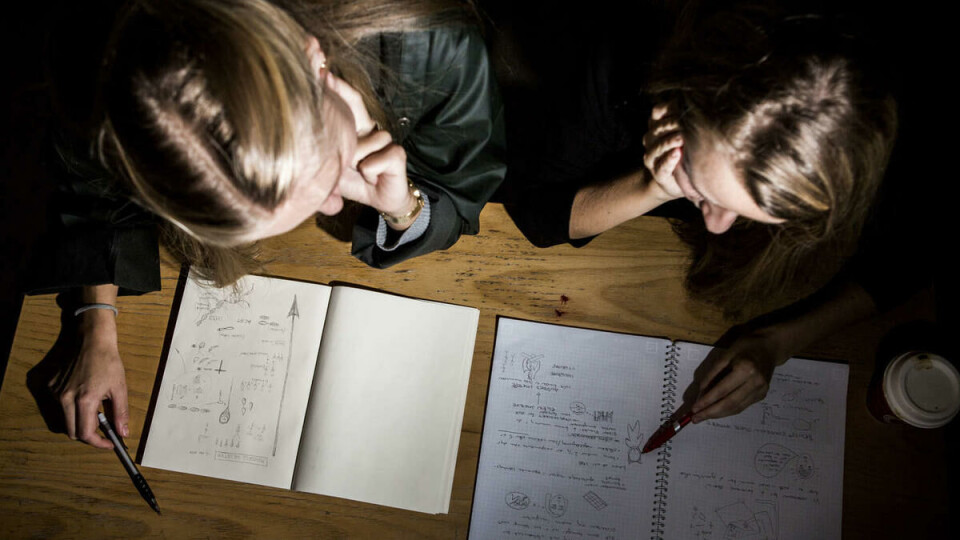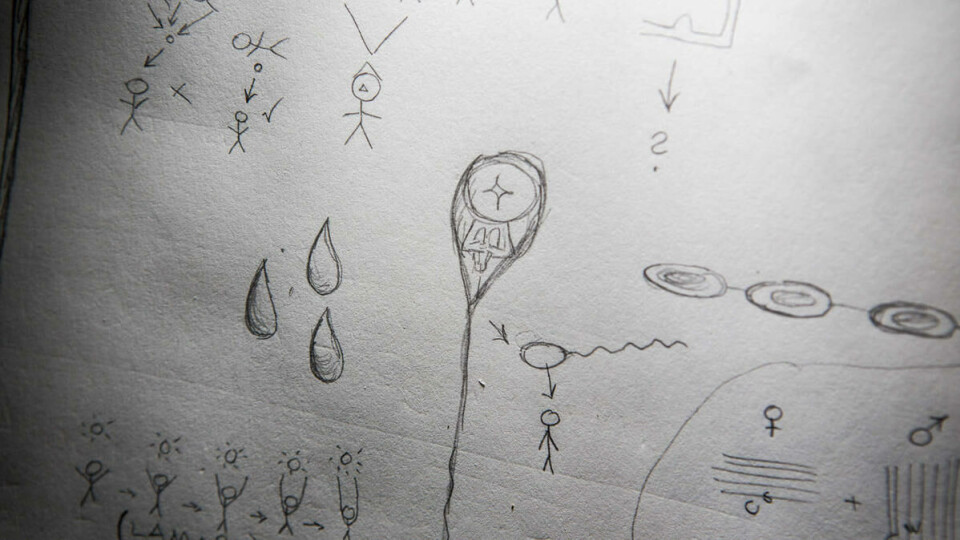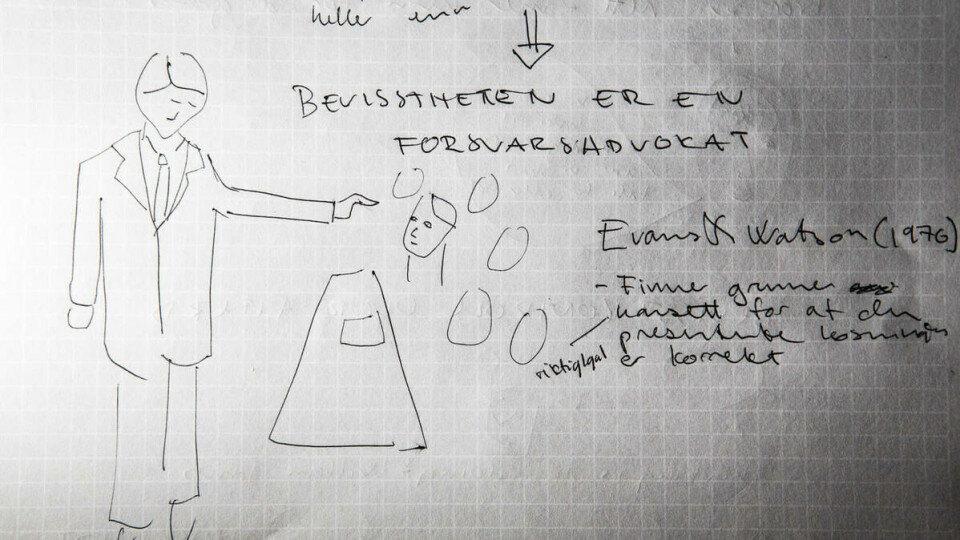


![Meier’s drawings: «I sent this to Nils Christian Geelmeuyden [a Norwegian journalist and writer] after I was at his book release party. He interpreted the drawing as meaning he maybe talked too much,» said Hans Gerhard Meier, laughing.](https://image.universitas.no/138915.webp?imageId=138915&width=960&height=540&format=jpg)
Doodling in class could help you learn
Drawing in the margins of your notes might seem childish, but Hans Gerhard Meier says you should try it.
In lectures across Oslo, students sit and diligently note down everything they hear. Some tap their keys so hard you would think they had typewriters, others write until the ink practically sprays. Some pull out their phones. But how much are they actually remembering?
«I don’t see students reflecting and contemplating based on their notes,» Hans Gerhard Meier said. As Associate Professor in interaction design at Oslo School of Architecture and Design (AHO), he says he sees many students who simply write down whatever the lecturer says, without actually thinking about the topic. That’s why he suggests drawing instead of taking notes.
«When you draw, you make associations. By doing so, you process information. Pictures can help the brain remember and make better connections,» he explained.
Meier has a theory that with enough experience, people could build their own visual «libraries» to use later. He emphasized that the drawings don’t have to look pretty, and pulled out a few of his own doodles.
«You have to get over thoughts like ‘I’m not good enough at drawing.’ This is just for you,» he said.
Just hype?
There is a lot of talk nowadays about innovation and creativity, both in the business world and educational institutions. Meier thinks this alternative form of notetaking fits in well with that focus.
He discovered for himself that sketches could sell ideas to customers and clients, and says that more companies are seeing the value of drawing. Meier says some companies hold workshops costing 50,000 NOK where employees learn how to process their ideas through drawing.
«I hope it’s not just hype,» he said.
Not for everyone
Olav Schewe, author of the book «Superstudent,» also recommends drawing. The self-described super student, who has attended Oxford, Berkley, and Norges Handelshøgskole, says we should question how much notetaking is necessary in the first place.
«In some classes it’s difficult to take notes and listen to the lecture at the same time. Some students might find it better to just listen without taking notes,» he said.
If you are taking notes though, Schewe says doodling or adding visual elements can help.
«The brain works well with visual elements, and remembers pictures better than text,» he said. Giving your notes a visual element, such as a mind map, can make it easier to remember.
Schewe says adding colors and using fewer words can help even more, though he added it won’t work in every class.
«Just drawings and no words? I’m skeptical to how well that will work in every subject. It could be hard in math or technical classes,» he said.

Notes still necessary
Ylva Østby is a post-doc at UiO’s Department of Psychology, and author of a new book that also recommends drawing during class. She says drawing reminders of key concepts can be very helpful for learning.
«If you can conceptualize what you learn by drawing it, that’s great. Then you’re using more of your memory capacity to code the information you need,» she explained.
«Or you can just draw to keep yourself awake, like I do,» she said, and laughed.
So is taking notes necessary at all? Østby thinks it’s still a good aid. «It depends on the person, but notes can be a necessary memory aid when you’re reading through the syllabus right before an exam,» she said.



































